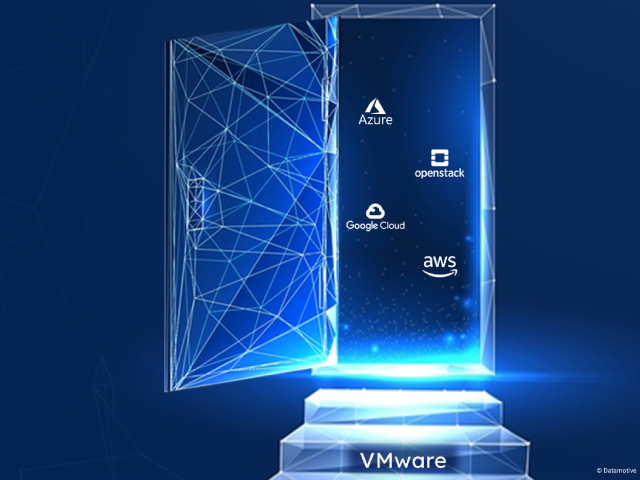The recent Broadcom’s VMware acquisition has triggered a sharp increase in prices for VMware services, alarming many businesses. This acquisition has disrupted the market dynamics, leading to significant cost escalations that are burdensome for a majority of businesses reliant on VMware's technologies. The sudden surge in prices threatens to strain budgets and operational efficiencies, compelling organizations to reassess their IT strategies and potentially seek alternative solutions to mitigate the financial impact.
In such dynamic business environment, agility and cost-efficiency are paramount, and thus it is proved: strategic IT decisions can make or break an organization's competitive edge. Among these decisions, the choice of virtualization platforms plays a crucial role. VMware has long been a cornerstone of many enterprises' IT infrastructures, offering robust virtualization solutions that have supported businesses through various technological epochs. However, as businesses evolve and the IT landscape continues to shift towards cloud-based solutions, the question arises: Do you have a VMware exit strategy?
Importance of Having an Exit Strategy
An exit strategy is not merely a contingency plan but a strategic, proactive approach to managing change effectively. It allows businesses to prepare for transitions away from current technologies, such as VMware, towards more suitable alternatives that align with their strategic objectives. The points to consider while defining a clear exit strategy include:
- Complexities: Identifying and addressing potential risks associated with platform transitions, such as data loss, downtime and operational disruptions, and trial and errors while maintaining the data consistency.
- Time contemplation: Time contemplation: Considering the time taken throughout the exiting process. One should take a note that time taken for migration should be minimum and the cutover SLA should be low.
- Evolve and Adapt: Adapting to emerging technologies and market trends without being tethered to outdated platforms.
How to Develop an Exit Strategy
Crafting an effective VMware exit strategy involves several key steps to ensure a smooth and successful transition:
- Assessment and Evaluation: Begin by conducting a comprehensive assessment of your current VMware deployment. Understand its strengths, limitations, and how well it supports your business objectives. This assessment should include technical capabilities, performance metrics, and cost implications.
- Identify Alternatives: Research and evaluate alternative virtualization platforms or cloud solutions that meet your evolving business needs. Consider factors such as scalability, flexibility, security features, and integration capabilities with your existing infrastructure.
- Identify Right Migration Tool: The present tools either work on data streaming mechanism, which means agent-based, or on snap-shot mechanism, which means long downtime.
- Risk Analysis and Mitigation: Assess the potential risks associated with migrating away from VMware. Develop strategies to mitigate these risks, such as phased migration approaches, data backup plans, and contingency measures to handle unforeseen challenges.
- Transition Planning: Develop a detailed transition plan that outlines the timeline, milestones, responsibilities, and resources required for a successful migration. Engage key stakeholders and IT teams early in the planning process to ensure alignment and buy-in.
Data Migration and Continuity Planning
Data migration is a critical component of any VMware exit strategy. Ensuring seamless data movement and continuity of operations are essential to minimizing disruptions and maintaining productivity. This is where Datamotive excels.
Cloud Migration and Data Recovery with Datamotive
- Cloud Migration Excellence: Datamotive offers a robust cloud migration solution designed to facilitate seamless workload movement across various platforms. Our expertise in workload portability ensures that you can migrate data from any on-premise virtualization platform or major hyperscale cloud with 10-minute cutover downtime and minimal disruption.
- Data Recovery Expertise: In addition to migration, Datamotive provides comprehensive data recovery solutions to safeguard your critical business information. Our rapid recovery capabilities ensure minimal data loss and downtime, helping you maintain operational continuity in the face of unexpected disruptions.
- Workload Portability for the Hybrid Cloud: Datamotive's agentless model enables efficient workload mobility between different cloud platforms. Whether you're moving workloads between on-premise environments, public clouds, or hybrid configurations. With an online, block-level replication technology, Datamotive ensures 100% data consistency maintaining regulatory and compliance control implemented at VMware site.
In a Nutshell
As businesses navigate the complexities of modern IT environments, including the shift from VMware to alternative solutions, having a robust exit strategy is imperative. It not only prepares your organization for future growth and innovation but also mitigates risks associated with platform transitions. Datamotive stands ready to support your VMware exit strategy with our expertise in cloud migration and data recovery.
For businesses looking to optimize their IT infrastructure and embrace the benefits of cloud computing, now is the time to develop and implement a VMware exit strategy. With Datamotive's proven solutions and support, you can confidently navigate the transition, ensuring continuity, efficiency, and competitiveness in today's digital landscape.
Prepare your business for the future. Schedule a quick call to learn more about how we can help you achieve a seamless VMware exit strategy tailored to your unique needs and objectives. Experience innovation with confidence, supported by Datamotive's commitment to excellence in cloud migration and workload portability.
